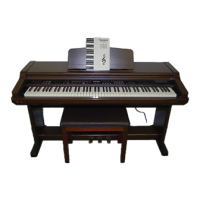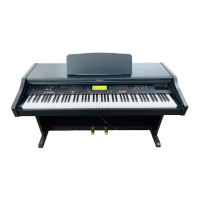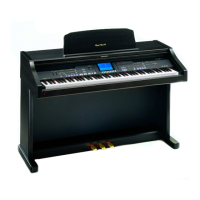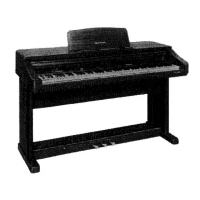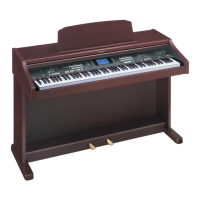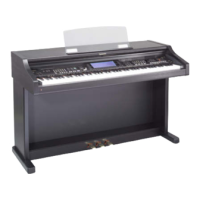PRACTICALAPPLICATIONS
-.#
Part I Sounds and effects 2
Play Style 2
Sound Select 3
Pedals
5
.Effects 5
Digital Reverb (PR250/PR350)
6
Mixingtwosounds 6
Keyboard Split 7
Transpose
8
Partll Playing the rhythm 9
Rhythm Select 9
Start the rhythm 10
Balance 10
Tempo 11
Intro 11
Count 11
Fillin 12
Ending 12
Keyboard Percussion 12
AutoPlayChord 13
OneTouchPlay 16
PaneIMemory 16
Partlll Recording and playback 17
Sequencer 17
, . Storing a chord progression 17
. Store the following chord progression. . . . . . . . . . . . . . . . 18
. Automatic playback of the stored chord progression. . .. 19
. Storing rhythm changes 19
. An exampleof storing in the Sequencer. . . . . . . . . . . . . . 20
Storing a performance 21
. Example of storing a piano performance. . . . . . . . . . . . . . 22
, ~\~"\~~~'Q."\-~'i-~'Q.,,\ '2.~
. Playing back the performance 25
. Erasingthe recordedperformance. . . . . . . . . . . . . . . . . . . 25
Partrv Creating rhythm patterns 26
Composer 26
. Setting up 26
. Recordingpart-by-part 28
. Play back the stored pattern 30
. Editing a preset rhythm pattern 30
PartY Externalmemory 31
Digital Disk Recorder (SY-FD20) 31
Errordisplay 35
Part VI Setting the functions 36
Function-setting modes 36
Part VII MIDI 41
WhatisMIDI? 41
MIDI stickers 41
The following kinds of data can be transmitted/received. . . . . 42
CHANNEL 42
MIDI Implementation Chart 48

